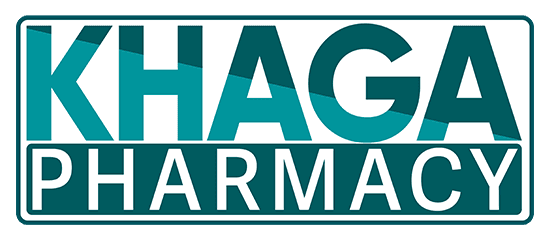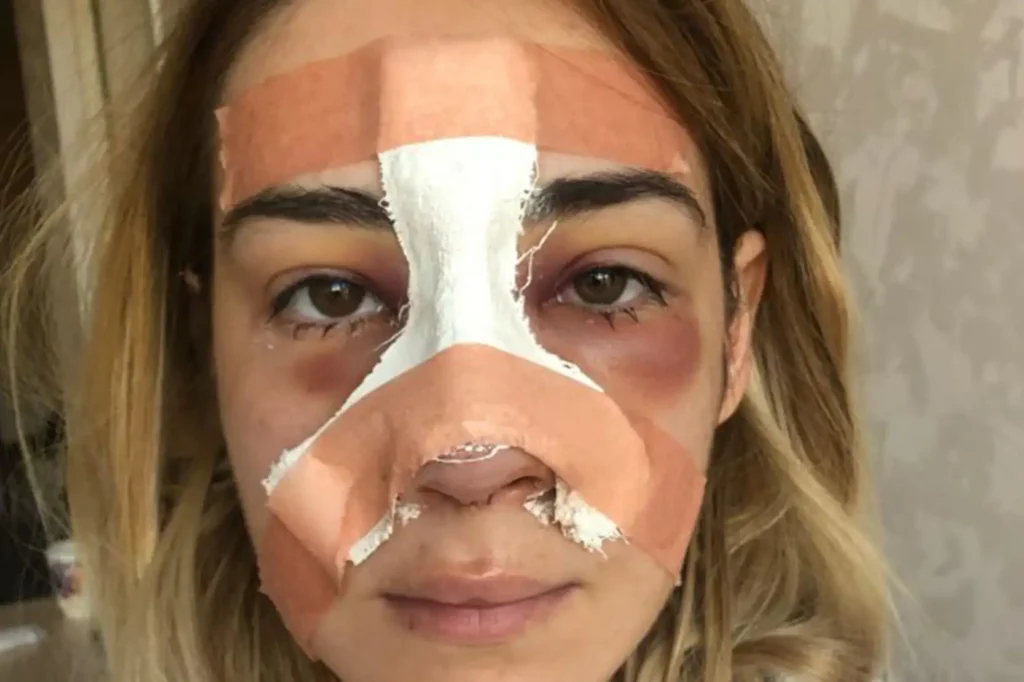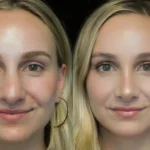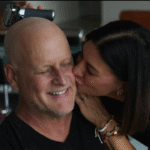Discover the ultimate guide to Rhinoplasty Recovery Day by Day and understand what to expect after your nose surgery. This detailed blogpost provides a comprehensive day-by-day timeline, expert tips, and actionable advice to help you manage swelling, bruising, and discomfort during each stage of recovery.
Introduction to Rhinoplasty Recovery Day by Day:
Rhinoplasty, commonly known as a nose job, is a transformative procedure, but understanding the rhinoplasty recovery process day by day is crucial for a smooth healing journey. Recovering from rhinoplasty involves patience and attention to detail, as your body needs time to heal and adjust. While the results can be life-changing, knowing what to expect during each stage of recovery will help ease your concerns and keep you informed.
This guide walks you through the day-by-day rhinoplasty recovery timeline, offering a detailed breakdown of what you’ll experience in the first days, weeks, and months post-surgery. From managing initial swelling to resuming your daily routine, this blog offers tips, expert advice, and firsthand insights to ensure a safe and smooth recovery process.
Rhinoplasty Recovery Day by Day is usually not very painful.
What to Expect on the First Day After Rhinoplasty:
The day of your Rhinoplasty Recovery Day by Day is the start of your recovery journey. Once the procedure is complete, you’ll wake up in a recovery room, still feeling groggy from anesthesia. You’ll likely experience swelling, bruising, and congestion, which are all normal.
- Swelling and Discomfort: Expect moderate discomfort, which your doctor will manage with prescribed pain medication. You’ll also feel stuffy due to nasal splints and bandages.
- Post-Surgery Care: Rest is essential. Keep your head elevated to minimize swelling and avoid touching your nose. Your surgeon may provide a saline spray to keep your nasal passages moist.
The first 24 hours are critical, so arrange for a friend or family member to stay with you. Focus on hydration, light eating, and resting.
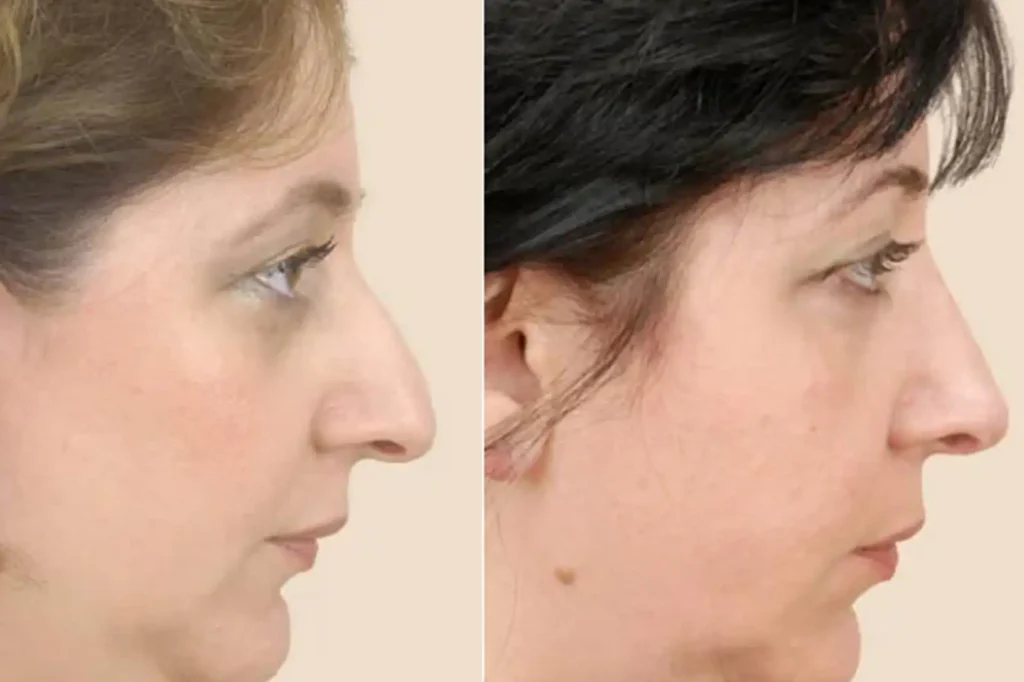
Days 2-3: Managing Swelling and Bruising:
By the second day, swelling and bruising around your eyes and nose will peak, making this the most challenging phase. While this might look alarming, it’s a normal part of the healing process.
How to Reduce Swelling: Apply a cold compress to your cheeks (not directly on the nose) and sleep with your head elevated. These measures will help ease discomfort.
Cleaning and Hygiene: Use a saline spray to clean your nostrils gently. Avoid blowing your nose or engaging in strenuous activities.
Bruising may start to discolor from purple to yellow, a sign that healing has begun. Stick to soft foods to avoid unnecessary facial strain.
Day 4-7: Transitioning to Greater Comfort:
By the end of the first week, you’ll feel noticeably better. Swelling will start to subside, although it won’t disappear completely. Breathing through your nose might still be difficult due to internal splints or scabs.
Splint Removal: Around day 7, your doctor will remove the external splint and stitches (if non-dissolvable were used). This is a big milestone, as you’ll get a glimpse of your new nose, though it will still be swollen.
Self-Care Tips: Continue using saline spray and avoid any pressure on your nose. You’ll feel less discomfort, making it easier to return to light, non-strenuous activities.
Weeks 2-3: Returning to Routine:
As you enter the second and third weeks, the swelling and bruising will reduce significantly, allowing you to feel more confident. Some residual swelling may persist, particularly in the tip of your nose, but it’s manageable.
Resuming Normal Activities: Light exercises like walking are fine, but avoid heavy lifting, bending over, or intense workouts.
Skin Care: Protect your nose from sunlight, as the skin is especially sensitive during this phase. Apply sunscreen and wear a hat if you’re outdoors.
You’ll feel more comfortable socially, as most visible bruising fades by this time.
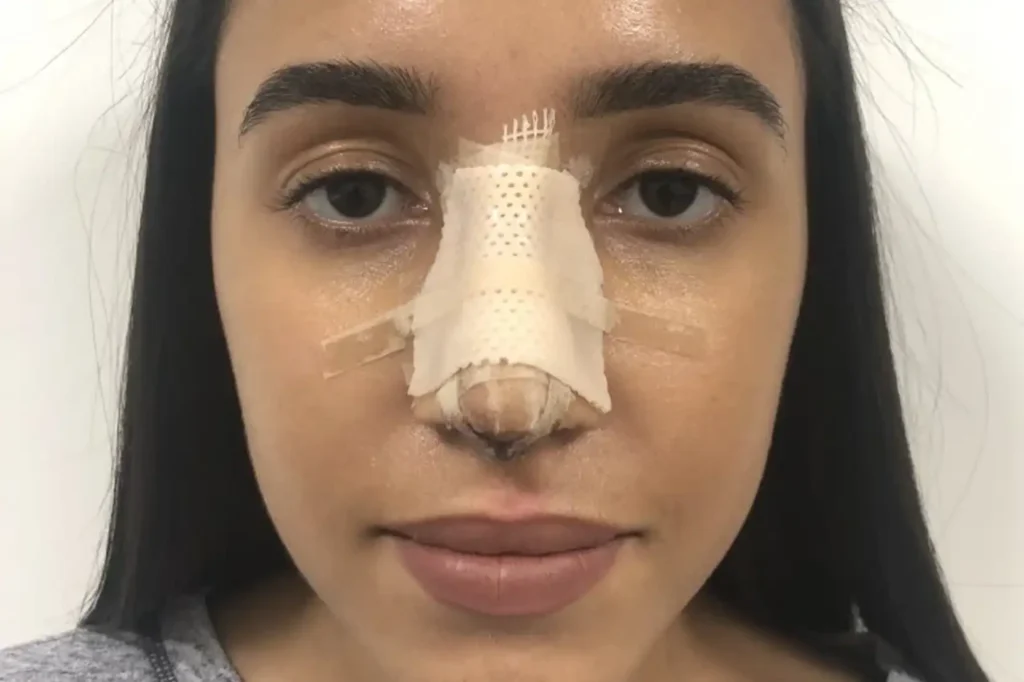
1-3 Months: Settling into Results:
The initial swelling will continue to improve over the next few months, and your nose will start to refine its shape. By the third month, most people feel fully adjusted to their new appearance.
Subtle Changes: Swelling in the nasal tip may linger but will become less noticeable with time.
Exercise Restrictions Lifted: By now, your doctor may allow you to resume more strenuous activities, including weightlifting and running.
Patience is key as the healing process continues. Keep attending follow-up appointments to monitor progress.
6-12 Months: Final Results Revealed:
It can take up to a year for all swelling to resolve and for the final shape of your nose to be fully visible. While subtle changes may occur, most patients feel completely healed and satisfied with their results by the one-year mark.
Scar Management: If incisions were made externally, scars will continue to fade with proper care.
Ongoing Care: Regularly moisturize your skin and protect it from sun exposure to maintain your results.
The wait is worth it, as your nose will look natural and harmonious with your face.
Top-Rated 3 Rhinoplasty Clinics in the USA:
Here are some of the most recommended clinics for rhinoplasty across the United States.
1. The Beverly Hills Center for Plastic & Laser Surgery (California): Dr. Ashkan Ghavami leads this clinic, renowned for delivering natural, harmonious results tailored to each patient’s unique facial structure.[https://www.beverlyhillscenter.com]
2. Manhattan Facial Plastic Surgery (New York): Dr. Philip Miller, a double-board-certified surgeon, specializes in cosmetic and functional rhinoplasty using innovative techniques.[https://www.drphilipmiller.com/case-studies]
3. The Seattle Rhinoplasty Center (Washington): Dr. William Portuese is known for achieving balance and symmetry in his rhinoplasty procedures, making his clinic a top choice on the West Coast.[https://www.seattle-rhinoplasty.com]
FAQ
Most frequent questions and answers
Rhinoplasty Recovery Day by Day is usually not very painful. Most discomfort comes from swelling and congestion, which can be managed with medication and care.
You can typically return to non-strenuous work within 1-2 weeks, depending on how comfortable you feel.
Major swelling subsides within 2-3 weeks, but subtle swelling, especially around the nasal tip, can take up to a year to fully resolve.
Conclusion:
Rhinoplasty Recovery Day by Day is a journey that requires patience, care, and understanding of your body’s natural healing process. By following this day-by-day recovery guide, you’ll know what to expect and how to manage each stage effectively. Remember, every patient’s experience is unique, so stay in close contact with your surgeon and follow their advice for the best outcome. Soon, you’ll enjoy the confidence that comes with your enhanced appearance!
